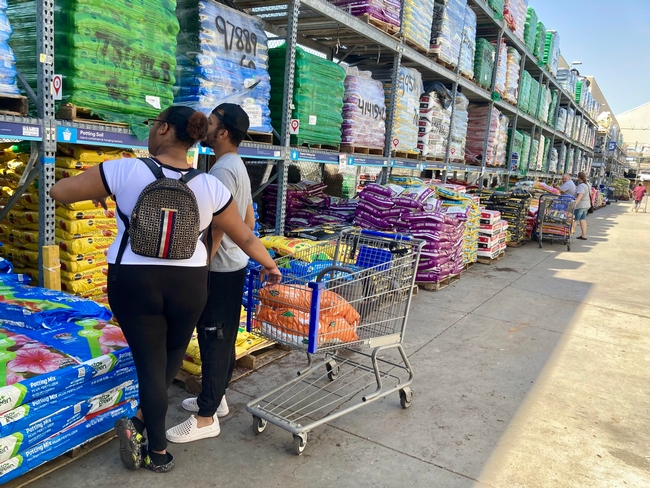- Author: Elinor Teague

The terms ‘potting soils' and ‘potting mixes' seem to be interchangeable. There is no garden-type soil in these products. They are soil-less mixes of ground redwood or other tree barks, peat moss, composts and/or humus, sand and perlite and/or vermiculite. Vermiculite retains water; perlite improves drainage and aerates the soil to allow roots to spread more easily.
Big box garden centers are the primary sources of gardening supplies and equipment for the majority of home gardeners, especially beginner home gardeners. It's worth taking a tour of a local big box garden center soils aisle to make note of the choices available and to check labels for specific information on potting soil mix contents and formulations. Master Gardeners' anecdotal information on the results of their use of preferred brands is extremely helpful as well.
The big box home improvement center closest to my home carries several nationally known brands of potting soil mixes, both organic and non-organic, for indoor plants, African violets, cacti and succulents, raised beds and container plants. Types and quality of components and the percentages of those components contained in potting soils vary widely by manufacturers; labels often provide minimal information.
Some labels on both organic and non-organic potting mixes claim that their potting soils will feed plants for 6 or 8 months, and that less watering is required. The tiny list on the very bottom of the bag (reading glasses required) provides percentages of the additional fertilizer added to the soil. There may also be mention of an added wetting agent, but the wetting agent is not always named. Wetting agents or surfactants, both synthetic and organic (e.g. yucca), help keep potting soils from drying out and help water move through the soil.
The percentages listed of added nutrients in almost all of the products is very low, 0.10 percent on average. A good quality low-nitrogen organic fertilizer will contain at least 4 percent nitrogen. The minute amounts of added chemically derived fertilizers can be easily leached out with watering. Organic potting soil mixes that contain natural ingredients like bat guano, earthworm castings or dehydrated manure may continue to provide lower-percentage nutrients for a longer period of time, but plants potted in either type of mix will require additional applications of a good quality fertilizer on a consistent basis to ensure vigorous growth and health throughout their growing seasons or lives.
Most perennial potted plants benefit from annual repotting and soil replacement since potting soil mixes often quickly lose their capacity to retain water and nutrients during our long, hot summers, with or without an added wetting agent. The time span between waterings depends mostly on the quality and composition of ingredients and the density and texture of the potting soil.

